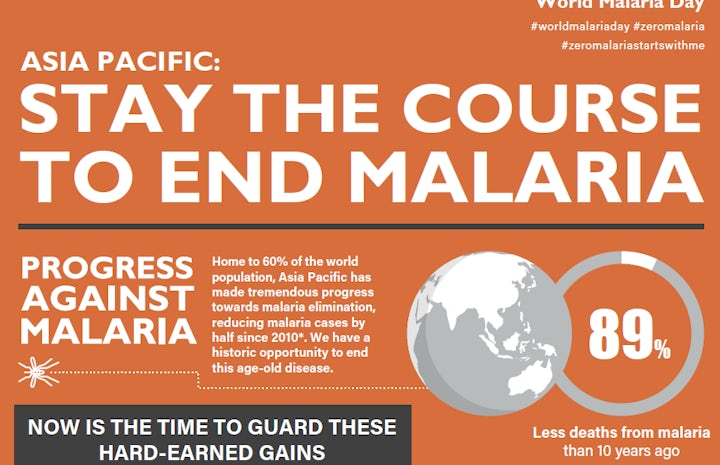Reflections on Malaria in Asia Pacific: Making the Last Mile Count
by Dr. Sarthak Das DrPH •

Bed nets for workers in Cambodia. Credit: Global Fund
World Malaria Day 2021
April 25, 2021 marks my first World Malaria Day as CEO of the Asia Pacific Leaders Malaria Alliance (APLMA) and provides an opportunity for reflection. Fourteen years ago, while living in the Eastern Highlands of Papua New Guinea, I held a mostly listless four-year-old boy in our home. The boy was my eldest son. The cause of his illness: unknown to us. At first we did not suspect malaria- there was little, if any, where we lived in Highlands. But thinking it through further we recalled he had been to Port Moresby in the recent past so perhaps that was the culprit? We rushed to our dear colleagues in Goroka General Hospital but there were no rapid diagnostics available. After searching widely in the public sector and health centers around us, we found RDTs (Rapid Diagnostic Tests) in a private pharmacy. My spouse, a clinician, administered it at home; eventually we were able to diagnose a positive test for p-vivax and sourced Artemisinin Combination Therapies (ACTs) from a private pharmacy (ACTs were also unavailable through the public sector). Our son recovered in good time.
Countless families are not so fortunate.
PNG, among many other countries in the region where I have lived and worked, such as Myanmar, Cambodia, India, and Indonesia continue their fight. Despite the tools and evidence of how to test, track, and treat it persists - claiming over 400,000 lives annually. In Asia Pacific we had over 2 million reported cases in 2019, mostly among vulnerable, rural, and tribal populations. That malaria disproportionately affects these communities, where I have personally witnessed success in battling other infectious diseases such as TB and HIV, was core to my desire to join the fight towards malaria elimination in Asia Pacific. Such inequity need not persist.
The malaria fight is one that can be won.
In the last 10 years alone, there have been 89% less deaths from malaria in the Asia Pacific; cases have almost halved since 2010. Sri Lanka remains malaria-free since it was certified in September 2016 and China is soon to join. Malaysia and Timor Leste are on the precipice of becoming malaria free and the Greater Mekong Subregion (GMS) has turned a tide.
Countries in the region continue to make impressive gains towards eliminating malaria by 2030. And remarkably, even during these unprecedented times. From malaria cases dropping further between 2019-2020 in the GMS, despite the pandemic; to community health workers stepping in to manage COVID-19 whilst continuing to manage malaria services in pockets of the region. Where there's a will, there is indeed a way. From a neglected issue in 2012, collective action around a shared vision has delivered results. We cannot turn back.
Our region faces the biggest malaria burden (90%) in just five countries - India, Papua New Guinea, Indonesia, Pakistan and Afghanistan – the poor and vulnerable face the greatest risk exposure. From cases concentrated in the provinces and rural areas to hotspots along international borders, malaria is remarkably resilient. As long as it exists, it will be an engine of inequality, burdening the poorest and most vulnerable communities, and will always have the potential to resurge in times of crisis.
As of this writing, we are in yet another extraordinarily challenging phase of the pandemic. In our battle with COVID-19, we clearly see that links in systems we need - surveillance, community health workers, supply chain, data management - must extend to vulnerable communities and locales for us all to be safe.
This is true for our malaria fight as well. Tackling the last remaining areas of transmission through surveillance and data is critical; tailored sub-national solutions that recognize the heterogeneity of malaria is foundational. Investments in building capacity to manage effectively must accompany tools and innovation. We know what to do. Let’s apply it with increasing precision, continued political will, and leadership that extends from communities to capitals.






